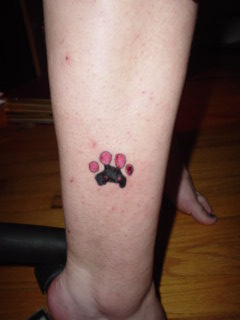Talk to any "ink head" - that is, tattoo aficionado - and you'll find the same subject topping the conversation. How long tattoo inks last for, and what can be done to make sure they last as long as possible. Check out any new tattoo, compare it to one that is two or three years old, and you'll instantly see what is meant here. Tattoo ink fades, and the worse the quality of the ink the quicker that happens.
Look at a new tat on the body of a man or woman who has had previous work done in the past. The new tattoo is bright and bold next to the less obtrusive colours of the older images. The grail quest of the tattooist's art is to find those elusive tattoo inks that really work - the ones that hold their richness, depth and colour through years of sun, wind, rain and of course personal hygiene routines.
There are ways to ensure that tattoo ink and the tattoos it makes doesn't, or don't, fade with time: avoiding direct exposure to sunlight until a tattoo is well and truly "worn in", for example; or not using abrasive soaps or household cleaners. The best way, though, by far the best way, is to check that the inks being used in the first place are of the best possible quality - and the easiest way to do that is by sourcing tattoo inks from quality suppliers.Fortunately, the shrinking world (brought close together by the invisible strands and byways of cyberspace) has made sourcing good quality anything pretty easy - and tattooist's inks are no exception. UK based sites like Tattoo Kit have excellent trade links with the world's best brand names and most prominent suppliers of ink. UK tattooists and ink heads can now get their hands on the real deal, imported from Japan and the US - ensuring that every kind of tattoo, from the old style Oriental look tats to modern South America flavoured images (skulls and flowers are big right now, done large and in vivid colours) is done with the proper tattoo inks.In every case, a tattoo has a variety of ink it would be done best in. Older style inks are gentler, less boldly coloured but full of a soft depth. This kind of ink is best for the traditional tattoo designs first popularised by soldiers and sailors returning from World War postings in Asia and the Orient. Modern tattoo designs, which tend to have their roots more in mainstream underground music forms like rockabilly, and the Latin influenced rock music found on the West coast of the US, use brighter inks - larger areas of solid colour filled with blazing oranges and deep blues. The tattoo inks required for this kind of image are completely different - the kind of thing first used by the Californian chopper guru most famous for his 1980s skate and hot rod designs.Source the right inks and one's tattoo will stay bright and clear forever. Just make sure the equipment matches the quality of the ink.Like body piercings, tattoos are created by the constant application of ink just under the subcutaneous layer of the skin with a needle. At first, many tribes, sailors, and other groups used to apply the ink by hand. This was a long, painful process and the marked people were usually of high status. The tattoos were often a sign of respect, rank, and social status. Since the tattoos are permanent, the owners were guaranteed respect for life.
The interest of tattooing for the general public spread throughout the world in fads. A sailor would bring over a fully tattooed indigenous person and interest would spread like wildfire. In London, a sailor brought over a tattooed Polynesian from the South Pacific, and many of the people of London began to acquire their own small tattoos in secret places. However, interest in tattooing waxed and waned due to its long, arduous process of applying every dot of ink by hand.
The electric tattoo machine is a relatively recent invention, created in 1891 by Samuel O'Reily, and has revolutionized tattoos into an art form. Tattooing can still be long and painful but now the many punctures in the skin are done automatically at thousands of punctures per minute and can allow for better detail and shading. Skin is the most unique canvas and a tattoo that is placed onto the skin is permanent, requiring extra consideration for the right tattoo, the right artist, and the right placement. That piece of art will follow throughout one's lifetime.
In New York City, Samuel O'Reily trained a partner named Charley Wagner, who continued teaching after O'Reily's death. For a brief while, Chatham Square flourished with tattoo artists while the rest of the world remained unimpressed with tattooing. For a long time tattooing was generally stigmatized and most people with tattoos were stereotyped to be scary, dangerous, or freaks. During the 1920s tattoos began to be recognized for where a person has been in their travels, as tattoo artists set up shops in Coney Island. An outbreak of hepatitis, blood poisoning and other disease even worsened the prospects for tattooing in American culture.
Finally, a tattoo artist named Lyle Tuttle changed America's perception of tattooing by introducing celebrities to the art form. He tattooed them, mostly women, and used the media to change their stereotypes about the types of people who got tattoos. Together with the heightened awareness of the importance of sterilization and the improvement of training, tattoo popularity began to surge in the last few decades.







No comments:
Post a Comment